
Owen Holland, “‘These Christs that die upon the barricades’: Victorian Responses to the Paris Commune”
The Paris Commune of 1871 provoked several different kinds of reaction in Victorian Britain during the fin de siècle. William Morris and Oscar Wilde (amongst others) celebrated the Commune in their poetry and political writings, re-assessing the event’s meaning in the context of the 1880s socialist revival, while the republicanism of Algernon Charles Swinburne led him to adopt a more hostile attitude in the immediate aftermath of the revolution. Several other writers sought to think through their confusion in response to the Commune, including John Ruskin, Gerard Manley Hopkins and George Gissing, but they all did so against the consistent pressure of conservative reaction, exerted in the form of periodical and newspaper commentary, and sensationalised misrepresentation of the Communards’ deeds and aims. This article surveys some of the main contours of the Commune’s discursive afterlives in Britain, arguing that the British response was characterised by multiple forms of political and aesthetic contestation.

Jason Camlot, “The First Phonogramic Poem: Conceptions of Genre and Media Format, Circa 1888”
By 1888, the technology of the phonograph, and the medium of the phonograph cylinder, were established as market-ready. What was the imagined potential of this media technology in relation to known modes of communication and expression? This article recounts how “The Phonogram” or phonographic letter was prototyped from 1887 to 1892 through the efforts of Thomas Alva Edison and his London agent George Gouraud. Edison’s prototyping work and Gouraud’s efforts in developing recordings, scripts for phonogramic speeches, and formats for typographical transcription of the cylinder recordings represent a rich case study for documenting the nature and significance of their efforts to consolidate the medium and define the generic parameters of the phonogram (a speech recording) as a distinct form of global communication. By theorizing the relationship between late-Victorian concepts of medium, format and genre, respectively, and by interpreting the “first phonogramic poem” (16 June 1888) as an articulation of the meaning of sound recording at the historical moment that it arrived as a viable media technology, this article helps explain how sound recording technologies were imagined in relation to specific genres of communication. Drawing upon periodical literature, and documentation available through the Thomas Edison Papers archive—including phonogramic transcripts and speeches, marketing and foreign business strategies, patent applications, and packaging and design documents—this article explains, in particular, the generic and rhetorical protocols that informed the attempt to establish the phonogram as a new medium of intimate communication and international correspondence.

Troy J. Bassett, “‘More than a Bookseller’: Iredale’s Library as the Center of Provincial Literary Life”
Andrew Iredale welcomed Her Royal Highness Princess Victoria and her cousins to his library in Toquay, Devon on 1 September 1898 where the group bought books and photographs. Founded by Iredale in 1872, Iredale’s Library became the “centre of literary life” in the seaside resort community well into the twentieth century. This article considers the circulating library’s role in the community: in addition to selling and lending books, the library served as a place for public and private meetings, third-party business transactions, and interpersonal networking. As the history of Iredale’s Library illustrates, provincial circulating libraries played a vital role in communities well beyond their money-making operations.

James Najarian, “Alexander Burnes’s Travels into Bokhara (1834)”
Alexander Burnes’s Travels into Bokhara (1834) is a foundational text of the British fascination with Central Asia, both in a geopolitical sense—the “Great Game” of the rivalry between Britain and Russia in Asia—and in a literary one. It is the most prominent of many travelogues of Afghanistan and Central Asia that relate experiences from the late 1820s to late 1830s, preceding the First Anglo-Afghan War (1839-42). Burnes’s Travels sold well and were immediately translated into French. For a time “Bokhara Burnes” was a literary celebrity. Yet the sensation of his Travels led him to another, less successful appointment in Kabul and finally to his third and final appointment there, as British envoy during the war. Not only was Burnes Britain’s leading Afghan expert; he also became the Afghans’ leading target. His murder sparked the course of the British rout. With a turn to his Persian secretary Mohan Lal Kashmiri’s account of the same travels in his Travels in the Panjab, this paper examines Burnes, his career, and his Travels in order to understand the events and his text’s role in them.
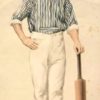
Joanne Wilkes, “The Implications of the Cricket Match in Anthony Trollope’s The Fixed Period (1882)”
Anthony Trollope’s late novel The Fixed Period (1882), set a century in the future in a fictional South Pacific island, has often puzzled readers. It deals with a policy of compulsory euthanasia in the politically independent island of Britannula, a policy that is overturned when the island is taken over by Britain. My article aims to explain an odd interlude in the novel: a cricket match in Britannula between a local and an English team. Drawing on the history of cricket matches between England and its antipodean colonies around the time of the novel’s composition, I argue that the cricketing interlude serves to highlight the text’s take on the Britannulans. This community, living a hundred years in the future, claims to be autonomous, but it possesses a mindset still governed by a sense of Britain as the “mother country.” Hence Trollope emphasizes how difficult it is for settler societies to shake off such attitudes and ties.
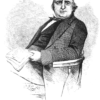
Janice Schroeder, “The Publishing History of Henry Mayhew’s London Labour and the London Poor”
Versions of Henry Mayhew’s massive social survey London Labour and the London Poor appeared in several publishing formats, including newspaper column, weekly serial, live stage show, and bound volume. This article traces the republication and remediation of London Labour alongside Mayhew’s repackaging of his interviews with London “street-folk” from 1849 onwards. I offer a succinct, accessible account of the complex publishing history of the text, from print newspaper column to digital edition.
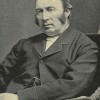
Kimberly J. Stern, “The Publication of John Pentland Mahaffy’s The Decay of Modern Preaching (1882)”
This contribution to BRANCH documents the historical and biographical conditions surrounding the publication of John Pentland Mahaffy’s controversial volume The Decay of Modern Preaching (1882). Although often deemed to be a secular or even heretical thinker, Mahaffy emerges here as a thoughtful scholar of religion standing at the crossroads of faith and reason. In the years preceding the publication of The Decay of Modern Preaching, Mahaffy witnessed a number of changes at Trinity College Dublin that threatened the principles he deemed essential both to good preaching and to intellectual culture more broadly. Mahaffy’s views on intellectual work and religion were mutually sustaining, a fact that helps to enrich our understanding of this important text, its troubled reception in the nineteenth century, and the evolving narrative of nineteenth-century faith.
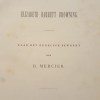
Karen Dieleman, “Aurora Leigh in the Netherlands, 1870-1900″
Elizabeth Barrett Browning’s 1857 verse-novel Aurora Leigh entered the cultural and social-political life of the Netherlands in the 1870s and 1880s through the work of three Dutch people: a literary critic, a social reformer, and a novelist. Conrad Busken Huet, the country’s leading literary and cultural critic, first brought the poem to Dutch attention in 1873 by showcasing it as a model of great art with high social and moral purpose, from which Dutch contemporary poetry could learn. Hélène Mercier, one of the leading social reformers of the country, then translated the poem into Dutch in 1883 to inspire the country’s social reform efforts. Its prophetic voice, Mercier declared, spoke as directly to the social conditions of the Netherlands in the 1880s as it had to those of England in the 1850s. Arguing that it was not necessary to retain Aurora Leigh’s poetic form for this voice to have effect, she translated the poem as prose. But Dutch novelist Martina van Walcheren did not agree. She produced a poetic translation in 1885 that her publisher supported at least in part because he opposed the emerging art-for-art’s sake movement. All these literary, social reformist, and aesthetic developments or debates were also fueled or complicated by national and international book economies and copyright questions.
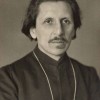
Kristin Mahoney, “On the Ceylon National Review, 1906-1911″
The Ceylon National Review (1906-1911) was the official organ of the Ceylon Social Reform Society, an organization founded by the art historian Ananda Coomaraswamy in an effort to combat colonial influence and reinvigorate Ceylonese cultural production. Coomaraswamy also served as an editor at the Ceylon National Review. This essay focuses on the manner in which Coomaraswamy, in the essays he contributed to and solicited for the journal, fostered transethnic Ceylonese nationalism and anticolonial resistance as well as transnational engagement with British countercultural movements and radical thought. Paying particular attention to Coomaraswamy’s interest in socialist aestheticism, Theosophy, and British discourses concerning vegetarianism, I foreground the highly cosmopolitan inflection of Coomaraswamy’s brand of Ceylonese nationalism as expressed in the pages of the Ceylon National Review. In the essays he wrote and selected for publication in the periodical, Coomaraswamy integrated the discourses of anticolonialism and socialist aestheticism and allowed British and Ceylonese vegetarians and Theosophists to speak in relation to one another, engendering a rich and surprising form of Ceylonese nationalism inflected by late-Victorian radicalism.
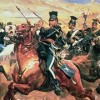
Martin Danahay “‘Valiant Lunatics’: Heroism and Insanity in British and Russian Reactions to the Charge of the Light Brigade”
The charge of the Light Brigade has always elicited ambivalent responses from eyewitnesses. Even though he was writing at a remove of time and distance from the action, Alfred, Lord Tennyson’s poem echoes the conflicted reactions of both British and Russian witnesses who characterized the charge both as heroic and an act of insanity. Tennyson’s polyvocal term “wild” in particular holds in suspense both admiration and the suggestion that it was an insane act, which resonates with accounts by Russians on the receiving end of the charge. Russian cavalry officers were convinced that their British counterparts were brave but deranged “valiant lunatics” after witnessing the charge. Both the British and Russians had difficulty in coming to terms with this incident, as they did with the Crimean War as a whole, because it was neither wholly a victory nor defeat for either side. As a result, even monuments to the Crimean War such as that in Waterloo Place or those in Sevastopol attest to loss as much as victory, and like the charge of the Light Brigade itself represent heroic failure.
